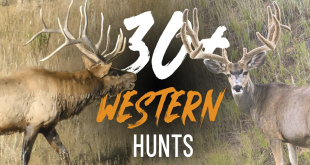
According to local reports, on Friday the US Fish and Wildlife Service made an announcement that the Yellowstone Bison is being considered for listing to the Endangered Species List under the United States Endangered Species Act, a US Statute that grants very strict and regulated management and protections for the country’s most endangered and threatened wildlife species.
What once roamed the plains and mountain-scapes of the West is now reduced to very limited pockets of bison populations throughout the western Mountain States. Mostly relegated to State and National Park areas such as Yellowstone and Teton National Parks in Wyoming and Montana, Custer in South Dakota, Grand Canyon National Park in Arizona and various mountain ranges and parks in Utah in addition to many Tribal lands are the most common spots to find plains and mountain buffalo populations.
This possible listing is somewhat troubling to many in the West, most notably the livestock growers who fear the possibility of disease outbreaks and competitive grazing from current and proposed wild bison populations.
Wild bison herds are very difficult to manage and even harder to control once released into wild landscapes as their movements and migrations are virtually unimpeded by common wire fencing solutions that currently exist for cattle and sheep grazing.
Needless to say, an endangered species listing could be a catastrophic move for many reasons for our cattle ranchers and food producers in the Western portion on the United States. This move shows further evidence that the Endangered Species Act continues to be used as a weapon to destroy many elements of our Western way of life in states like Montana and Wyoming.
Giving them an Endangered Species designation would open up a massive spectrum of control and oversight tools and tactics for Federal managers to supersede state officials with massive federal over reach potential.
This is just yet, another example of wacky science fostered inside the boundaries of Yellowstone National Park which soon bleeds over into the sovereignty of neighboring states in an effort to continue to move more control over our wildlife resources into the hands of Federal bureaucrats who have little to no knowledge of what true wildlife conservation means. The examples of this are numerous and plentiful.
We will keep you posted as to the progress of this highly controversial proposal.
Source:
https://www.theguardian.com/world/2022/may/03/canada-polar-bear-quebec-police
 Eastmans' Official Blog | Mule Deer, Antelope, Elk Hunting and Bowhunting Magazine | Eastmans' Hunting Journals
Eastmans' Official Blog | Mule Deer, Antelope, Elk Hunting and Bowhunting Magazine | Eastmans' Hunting Journals




